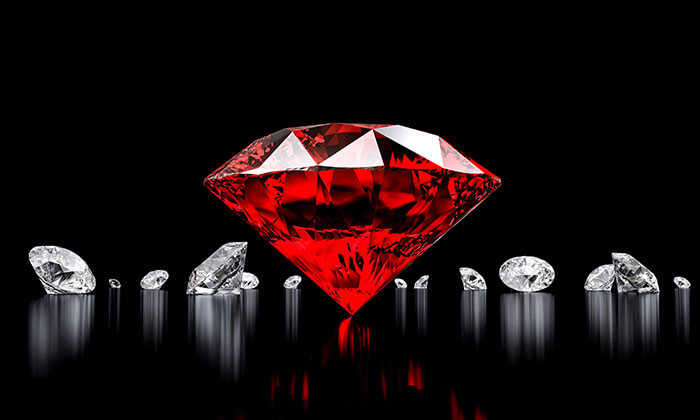Introduction to Blood Diamonds
When you hear the term “blood diamond,” it conjures images of conflict, suffering, and a complicated history. But what exactly does it mean? Blood diamonds, also known as conflict diamonds, are gemstones mined in war zones and sold to finance armed conflict against governments. These diamonds have a story that extends far beyond their sparkle, reflecting human suffering and ethical dilemmas that challenge consumers today.
Defining Blood Diamonds
At its core, a what is a blood diamond is a diamond that is mined under conditions that involve violence and human rights abuses. The revenue from these diamonds often fuels brutal conflicts, leading to a cycle of violence that impacts entire communities.
Historical Context
The term gained notoriety in the late 1990s and early 2000s, particularly during the Sierra Leone Civil War. Rebel groups used the sale of diamonds to fund their military operations, which often included atrocities against civilians. This led to global awareness and subsequent movements aimed at regulating the diamond trade.
The Origins of Blood Diamonds
Conflict Zones
Blood diamonds are typically sourced from regions afflicted by civil wars and unrest. Countries like Sierra Leone, Angola, and the Democratic Republic of the Congo have become infamous for their blood diamond trades, where mining operations are often controlled by rebel factions rather than governments.
The Role of Rebel Groups
Rebel groups exploit local populations and resources, forcing miners to work under horrific conditions. These groups may use violence, intimidation, and even child labor to maintain control over diamond mining operations, making the connection between diamonds and conflict painfully clear.
Impact on People and Communities
Human Rights Violations
The consequences of blood diamond mining are dire. Reports of human rights abuses, including torture, rape, and murder, have surfaced from conflict zones. The diamond trade often exacerbates these violations, with local communities suffering as a result.
Displacement and Suffering
In many cases, communities are displaced from their homes due to mining operations or armed conflicts. Families are torn apart, and livelihoods are destroyed, leaving a legacy of trauma that can last generations.
The Diamond Supply Chain
How Diamonds Are Mined
Diamonds are typically mined through either alluvial or kimberlite mining methods. In conflict zones, the mining process is often unsafe and unregulated. Miners may work in perilous conditions with little to no protection or compensation.
The Journey from Mine to Market
Once mined, diamonds enter a complex supply chain. From the mines, they may be sold to dealers, cut and polished in various countries, and eventually reach retailers. This journey makes it challenging to trace the origins of a diamond, leading to ethical dilemmas for consumers.
Regulations and Initiatives
The Kimberley Process
In response to the blood diamond crisis, the Kimberley Process Certification Scheme (KPCS) was established in 2003. This international initiative aims to prevent the trade of conflict lab made diamonds by requiring countries to certify the origins of their diamonds. While it has had some success, it is not without its flaws.
Criticism of Current Efforts
Critics argue that the Kimberley Process is not rigorous enough. Some diamonds labeled as “conflict-free” may still come from areas where human rights abuses occur, highlighting the need for more robust regulations and better enforcement mechanisms.
Ethical Alternatives to Blood Diamonds
Lab-Grown Diamonds
One of the most promising alternatives to blood diamonds is lab-grown diamonds. These diamonds are created in controlled environments and are chemically identical to natural diamonds. They offer a conflict-free option for consumers who want to avoid contributing to the issues associated with blood diamonds.
Fair Trade and Responsible Sourcing
Another ethical alternative is fair trade diamonds, which are sourced from mines that adhere to ethical labor practices. Supporting responsible sourcing can empower local communities and ensure that miners receive fair wages and safe working conditions.
How to Make Informed Choices
Researching Diamond Sources
As a consumer, it’s essential to research the sources of the diamonds you purchase. Look for certifications that guarantee ethical sourcing, and don’t hesitate to ask jewelers about the origins of their diamonds.
Supporting Ethical Jewelers
Choosing to buy from jewelers who prioritize ethical sourcing can make a significant impact. Supporting businesses that are transparent about their supply chains helps promote responsible practices within the industry.
Conclusion: The Path Forward
Blood diamonds represent a dark chapter in the history of the diamond trade, but as consumers, we have the power to drive change. By making informed choices and supporting ethical practices, we can ensure that the diamonds we cherish do not come at the cost of human suffering. Whether opting for lab-grown alternatives or supporting fair trade sources, every decision counts in creating a more compassionate diamond industry. Together, we can pave the way for a future where beauty and ethics go hand in hand.

